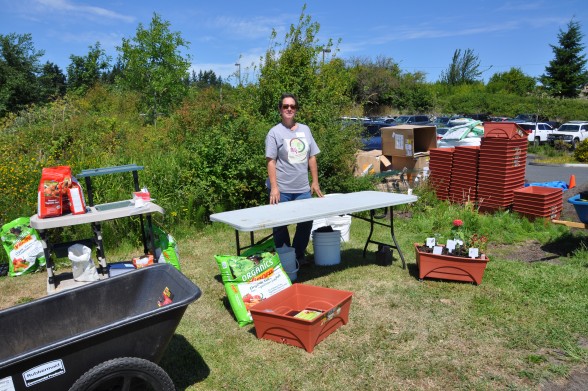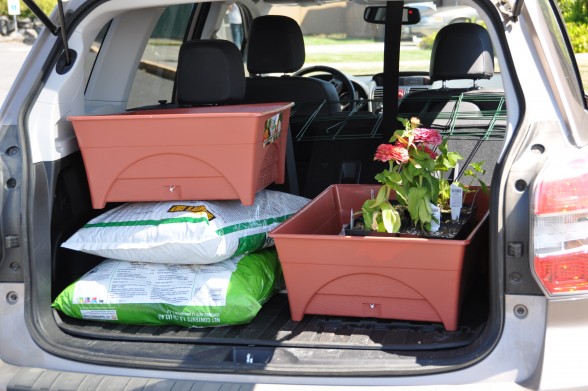Category: Local News
Give blood at the Tulalip Health Fair & Blood Drive, July 26
Ramp It Up, Skateboard Culture in Native America
Opens August 10 at the Tulalip Hibulb Cultural Center
Tuberculosis History Project in Snohomish County
Announcement of a Tuberculosis (TB) History Project in Snohomish County
The TB Voices Project for Snohomish County is looking for persons to share their tuberculosis (TB) stories with the community. Whether you or a loved one had TB, your story is important. Share your story on our website or contact us for a recorded interview.
The purpose of the TB Voices Project is to allow individuals from all generations throughout the county to tell their TB story, and in turn, these stories can help persons around the globe currently impacted by TB.
For more information go to www.Tbphotovoice.org or contact Project Director, Teresa Rugg at 360.862.9034, twrugg@frontier.com.
The TB Voices Project for Snohomish and King County is a project of TB Photovoice, in partnership with the Firland Foundation. Since 2006, TB Photovoice (based in Snohomish) has worked around the world to amplify the voices of individuals directly impacted by TB so that they, as well as their communities, can improve their overall health.
Tribes, Utility Protect Salmon Eggs
K. Neumeyer, Northwest Indian Fisheries Commission
A rainy April and a hotter-than-normal week in May created a challenge for the steelhead fry expected to emerge in Au- gust.
The rain, combined with heavy snow- melt after a string of 80-degree days in May, built up in the reservoir of Seattle City Light’s Skagit River Hydroelectric Project. To prevent an overflow that could scour out steelhead redds (nests), the utility released more water than usual, increasing the flow of the Skagit River. As a result, spawning steelhead dug redds in places at risk of being dewatered before the last fry emerge this summer, when flows are lower.
Water management in the Skagit Riv- er is guided in part by spawning surveys conducted by biologists Stan Walsh of the Skagit River System Cooperative and Dave Pflug of Seattle City Light. The Skagit River System Cooperative is the natural resources extension of the Swinomish and Sauk-Suiattle tribes.
Based on data gathered by Walsh and Pflug, Seattle City Light will release enough water in August to keep vulnerable steelhead eggs under water.
Walsh and Pflug have monitored salmon and steelhead redds between Rockport and Newhalem on the Upper Skagit River since 1995. They document new redds, note the condition of existing redds, and measure the depth of the shallowest redds to make sure the river’s flow stays high enough for those eggs to survive, but not so high that the eggs are washed away.
They also share data with state fisheries co-managers to help forecast run sizes.
“Seattle City Light has been a great part- ner to the tribes in water management,” Walsh said. “They’ve gone out of their way to protect fish beyond what’s required in their license agreement.”
Cedar Grove odor complaints return
By Bill Sheets, the Herald
EVERETT — As the weather keeps heating up, so again are the complaints against Cedar Grove Composting.
The Smith Island business was cited for four odor violations last month by the Puget Sound Clean Air Agency.
Inspectors for the agency recently traced the smells from residences in Marysville to the composting plant, twice June 6 and twice again June 25, agency spokeswoman Joanne Todd said.
The citations bring the total to 13 in the past five years for Cedar Grove. The plant has received numerous other odor complaints during that time from people living in Marysville and north Everett. The company also has received four written warnings in those five years.
A Cedar Grove official said information from its odor monitors contradict the clean air agency’s information regarding the June 6 complaints. As of Friday the company hadn’t yet received the violation notices for June 25, company spokeswoman Susan Thoman said in an email.
“Our on-site electronic odor monitoring system indicated that no detectable odors left our property during the time cited by the (notices for June 6),” Thoman wrote. “We plan to share this monitoring information with the agency.”
The notices won’t necessarily result in disciplinary action against the company.
“It’s up to our supervisors to be able to work through that with Cedar Grove,” Todd said. “And they can appeal it.”
These citations were the first for Cedar Grove in 2013, Todd said.
In 2011, the company was fined $169,000 for odor violations going back several years at both its Everett plant and its plant in Maple Valley, King County.
The company appealed those fines to the Puget Sound Growth Management Hearings Board, a state regulatory panel. The fines were upheld but the board knocked $50,000 off in deference to Cedar Grove’s expenditures on measures to curb the odors.
The board said Cedar Grove to that point had spent $6.5 million on odor control at the two locations combined, some of it voluntarily and some as a result of earlier violations.
Cedar Grove collects yard and food waste from hauling companies in much of Snohomish and King counties and grinds it, cures it and sells it for compost in gardens.
In past years, complaints often have spiked early in the summer, corresponding with an increase in volume of waste being brought to the plant at Smith Island.
Cedar Grove officials have said other sources could be causing the odors. The remainder of Cedar Grove’s fine from 2011 — $119,000 — was put toward an odor study last year by the clean air agency.
The study will combine information from 10 electronic odor monitors, called “e-noses,” and recorded impressions from volunteers in an attempt to scientifically determine the source of the offensive stench.
The total cost of the study is $375,000.The city of Seattle and King County, which both have sent yard and food waste to Cedar Grove for composting, are putting up $100,000 and $50,000, respectively. The city of Seattle recently decided to end its arrangement with Cedar Grove effective next spring. The clean air agency is spending $25,000 on the study.
Four monitors are located at Cedar Grove, having been purchased previously by the company. One monitor each also has been placed at the wastewater treatment plants operated by Everett and Lake Stevens; the Cemex plant in north Everett; the clean air agency’s weather station in central Marysville; one at a volunteer’s home in Marysville and another at a home in Everett.
The results of the study are expected later this year.
Diabetes garden plant give away

Photo by Monica Brown
By Monica Brown, Tulalip News Writer
TULALIP, WA – The Diabetes Garden at the Karen I Fryberg Health clinic gave away, to their attendees, planter boxes with plants. The Diabetes Garden is a place where patients and community members can come to learn more about plant and garden care for a healthier future.
Community members and patients were invited to come out and fill a planter box to bring home so they can start a small garden. The planter boxes were filled with an assortment of vegetable, herb and flower plants and each person was given a fresh bag of soil to bring home.
This garden event will run until 1:00 pm Tuesday, July 16. But will continue during future, to be announced, garden and health clinic events.

Photo by Monica Brown

Photo by Monica Brown
Old Fashioned Summertime (& Spring) Festival
Kla Ha Ya Days, July 17-21, Snohomish WA
For 100 years, families have gathered in the historic district of Snohomish for the annual Kla Ha Ya Days. The native word Kla Ha Ya means welcome and we welcome you to experience old fashioned summertime fun and enjoy our town.
Click here for the full schedule of the July events. (tentative schedule)
Since 1913 volunteers have made Kla Ha Ya Days possible. If you’re interested in keeping the tradition alive for another 100 years, check out our volunteers’ page. Volunteers are the back bone that make the festival fun!
Marysville Tulalip Chamber announces new Board
Kirk Boxleitner, The Marysville Globe
TULALIP — The Greater Marysville Tulalip Chamber of Commerce’s new Board of Directors represents a rare influx of new blood, according to Chamber President and CEO Caldie Rogers.
Although Rogers estimated that the Board already averages a turnover of about one-third of its members each year, she deemed this year’s number of new Board members unprecedented in the Chamber’s history.
“We deliberately seek out folks from small businesses, corporations, nonprofits and the Tribes to represent all segments of our community,” Rogers said. “This year’s Board boasts an especially amazing spectrum.”
Rogers touted the value of a recent team-building retreat at the Cedar Springs Campground in Naches, Wash., in getting the Board members familiar and comfortable with one another.
“We wanted a camaraderie that would allow them to discuss the pros and cons of issues without fear, so that when we do adopt a position, we’re unified behind it,” Rogers said. “That’s why we’ve never lost in our lobbying efforts.”
As the new Board plots the Chamber’s course for the future, Rogers called attention to Lance Curry of Edward Jones & Co., who will be heading up the Chamber’s emissaries program as part of its public relations efforts, and The Marysville Globe Publisher Paul Brown, who will chair the Chamber’s next “Buy Local” campaign.
“Educating the community on our local businesses has been proven effective,” Rogers said. “It’s one reason why we haven’t had to raise our dues for so many years.”
Rogers, Curry and Brown are joined on this year’s Board by Chair John Bell of Willis Hall, Vice Chair Teri Gobin of the Tulalip Tribes TERO, Past Chair David Chin of Go Small Biz, Chair Elect Will Ibershof of Waste Management, and Treasurer Robyn Warren of Langabeer, McKernan, Burnett & Co.
“Rebecca and Paul Pukis [of Mosaic Insurance Alliance] are waiting in the wings to chair our military affairs committee,” said Rogers, who named Perry McConnell of Hansen, McConnell and Pellegrini as the Chamber’s legal counsel. “We’re still waiting on a government affairs chair.”
Other Board members include Al Aldrich, Dom Amor, Dr. Becky Berg, Joy Brown, Doug Buell, U.S. Navy Cmdr. Jeff Caulk, Gloria Hirashima, Jessica Joseph, Pastor Greg Kanehan, Ken Kettler, John McKeon, Becky Mulhollen, Dennis Niva, Patrick Sisneros, Jack Schumacher, Rob Toyer and Chris Winters.
School Policies Reduce Student Drinking – if They’re Perceived to be Enforced
By Doree Armstrong | University of Washington 07/09/2013 10:39:00
“Just say no” has been many a parent’s mantra when it comes to talking to their children about drugs or alcohol. Schools echo that with specific policies against illicit use on school grounds. But do those school policies work?
University of Washington professor of social work Richard Catalano and colleagues studied whether anti-alcohol policies in public and private schools in Washington state and Australia’s Victoria state were effective for eighth- and ninth-graders.
What they found was that each school’s particular policy mattered less than the students’ perceived enforcement of it. So, even if a school had a suspension or expulsion policy, if students felt the school didn’t enforce it then they were more likely to drink on campus. But, even if a school’s policy was less harsh – such as requiring counseling – students were less likely to drink at school if they believed school officials would enforce it.
“Whatever your school policy is, lax enforcement is related to more drinking,” Catalano said.
The study was published recently in the journal Health Education Research.
The results were similar in Washington, where the legal drinking age is 21 and schools tend to have a zero-tolerance approach, and Victoria, Australia, where the legal drinking age is 18 and policies are more about minimizing harm.
In the study, 44 percent of Victoria eighth-graders and 22 percent of Washington eighth-graders reported drinking alcohol. Victoria students also reported higher rates of binge drinking and alcohol-related harms.
Apart from perceptions about enforcement, harmful behaviors in both states were reduced when students believed policy violators would likely be counseled by a teacher on the dangers of alcohol use, rather than expelled or suspended.
“Schools should focus on zero tolerance and abstinence in primary and early middle school, but sometime between middle school and high school they have to blend in zero tolerance with harm minimization,” said Catalano, director of the Social Development Research Group at the UWSchool of Social Work and principal investigator for the International Youth Development Study. “By the time they get into high school they need new strategies.”
Those strategies could include talking to a teacher or being referred to treatment. The likelihood of binge drinking was reduced if students received an abstinence alcohol message or a harm minimization message, and if they believed teachers would talk to them about the dangers of alcohol. Catalano said such remediation policies are an important predictor of less alcohol use among ninth-graders.
He said the study shows harsh punishment for drinking on school grounds, such as calling the police or expelling the student, doesn’t inhibit alcohol use on campus. Instead, long-term negative impacts of expulsion mean students feel disconnected from school and may subsequently drink more. Calling the police, which gives the student a police record, appears to make things even worse.
“What we’ve seen in other studies from this sample is suspension policies actually worsen the behavior problem,” Catalano said. “What that says to me is, although you want policies and you want enforcement of policies, there are other ways of responding than suspension, expulsion and calling the police: Getting a student to talk to a teacher about how alcohol might be harmful, or a session with the school counselor.”
The study was funded by the National Institute on Drug Abuse, National Institute on Alcoholism and Alcohol Abuse, and Victorian Government’s Operational Infrastructure Support Program. Co-authors are Todd Herrenkohl of the UW, lead author Tracy Evans-Whipp and Stephanie Plenty ofRoyal Children’s Hospital in Victoria, Australia, and John Toumbourou of Deakin University in Australia.
Source: University of Washington













